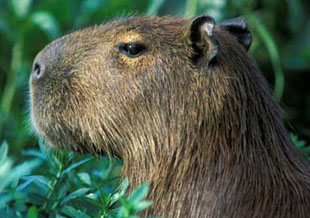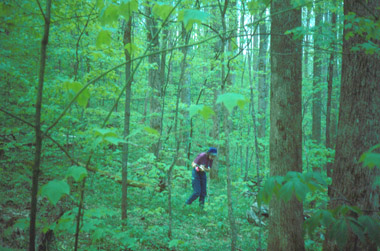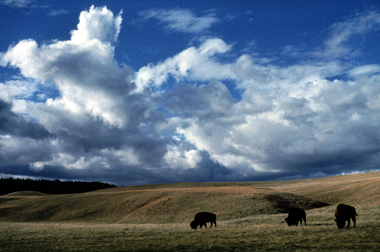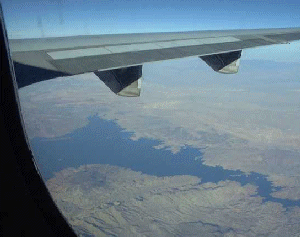Click on image for full size
Explore the Wetlands of Brazil!
News story originally written on February 19, 2002
"The Pantanal has the greatest concentration of fauna in the Americas. People outside Brazil know only the Amazon. . . it's a shame because the Pantanal is a very important ecological place." -- Dr. Maria Pádua, Former Director, Brazil's National ParksLocated in the center of South America, the Pantanal wetland covers parts of Brazil, Bolivia and Paraguay. The Pantanal is one of the largest regional wetlands in the world. Though the boundaries of the Pantanal are not universally agreed upon, it is safe to say that this wetland is at least four times the size of the Florida Everglades in North America. That's a big wetland! The wetland covers at least 140,000 square kilometers of land, much of which is flooded annually.
The flooding period from March to May, called the cheia, supports unique plant and animal life. The dry season, called seca, which lasts from September through November is also needed to keep this ecosystem healthy. There are even names for the periods of rising water (enchente) from December to February and periods of declining waters (vazante) from June through August.
The Pantanal has great biodiversity, including many species which are on the brink of extinction. The Pantanal is legendary for its bird life. It is estimated that some 700 species of bird call the Pantanal home, including herons, egrets, storks, spoonbills, ibises, ducks, jabirus and kingfishers. Twenty-six species of parrot can be found in the Pantanal including the endangered Hyacinth Macaw. The Pantanal is also home to caiman, relative of the N. American crocodile, and capybara, the largest rodent in the world. The Pantanal is one of the last refuges for threatened animals like jaguars, ocelots, maned wolves, giant anteaters, giant armadillos, marsh deer and Brazilian tapirs. Fish abound in this wetland environment (over 260 species have been noted), performing large-scale and long-distance migrations related to season and food and water availability. The vegetation of the Pantanal is very diverse as well, ranging from deciduous forests to evergreen forests to grasslands to savannas to aquatic vegetation based in standing water.
The Pantanal is one of the world's great natural wonders. Much of the ecosystem remains unexplored and unknown by scientists. What is known is that humans are degrading the health of the Pantanal system through illegal poaching, deforestation of the area, over fishing, and uncontrolled tourism leading to pollution of the area and scaring of animals. Rivers that enter the Pantanal are polluted with human sewage, agricultural pesticides and metal pollutants from activities like gold-mining. The future of the Pantanal is, perhaps, most threatened by the prospect of development in the area. The Hidrovia Project, an international project between 5 countries, would construct a 3,340 kilometer waterway by hydraulic alteration of the Paraguay and Parana rivers. This project would undoubtedly be catastrophic for the Pantanal wetland. If the Pantanal is to be preserved, consciousness of the ecosystem must be increased, more research must be done by scientists interested in creating sustainable uses of the land in and around the Pantanal, and finally, land must be bought from private owners (who own 99% of the Pantanal) to set up preservation areas for the flora, fauna and their habitat. Conservation International is certainly taking a step in the right direction and will be running an expedition to the Pantanal starting February 25, 2002. To receive daily email updates of the expedition, email j.byrd@conservation.org with your email information. Or access their website for daily updates during the expedition.















